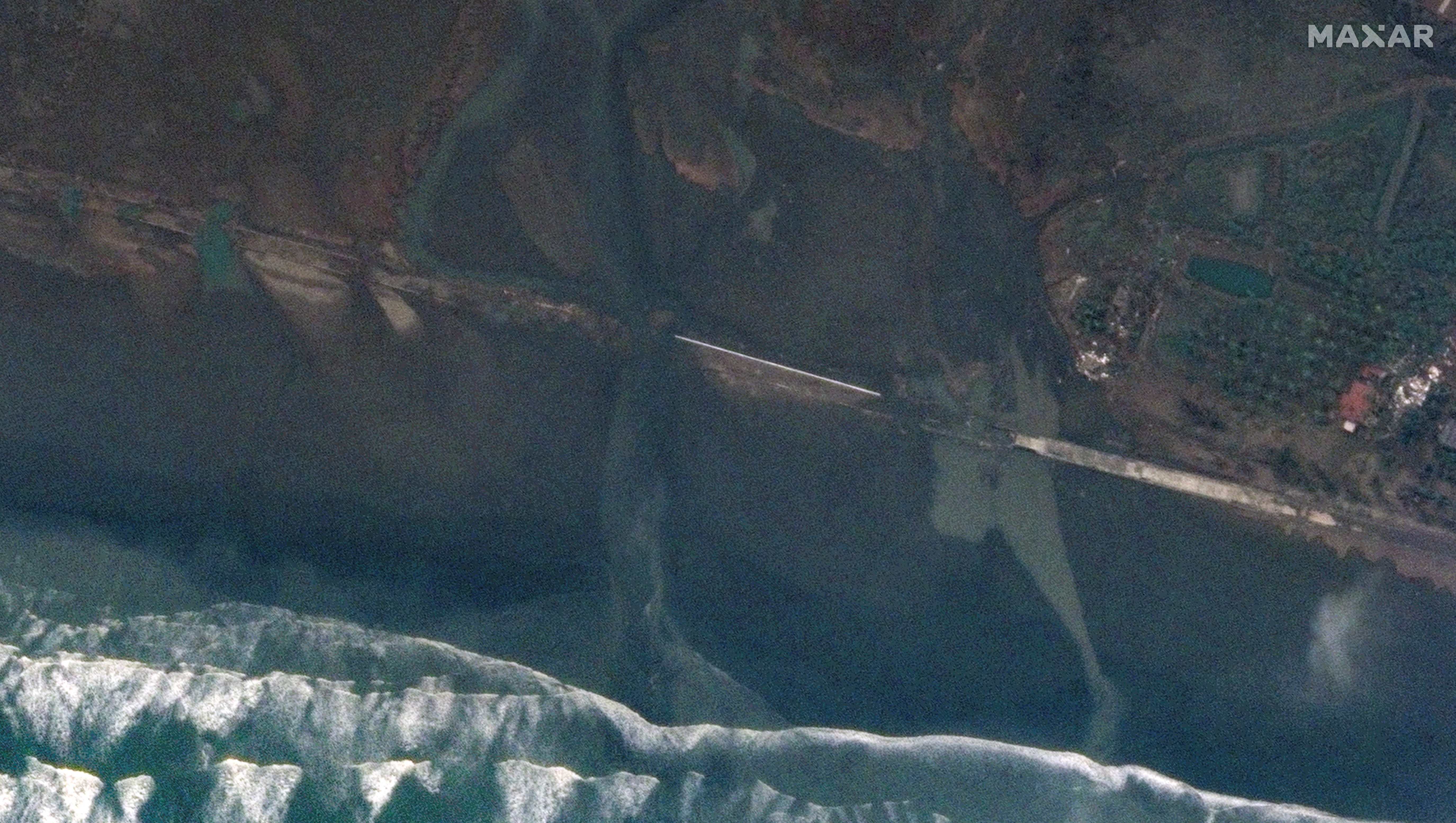/cloudfront-us-east-2.images.arcpublishing.com/reuters/GXYTH62F7BKHVJSRPBG6FIGOIA.jpg)

[1/5] A satellite image shows a bridge after the fall of Cyclone Mocha, in Sittwe, Myanmar, on May 15, 2023. Maxar Technologies/Handout via Reuters
(Reuters) – Hundreds of people, including Rohingya Muslims, are feared dead after a cyclone hit Myanmar at the weekend, with rescue efforts hampered by damage to infrastructure, residents and aid groups said on Tuesday.
Myanmar’s impoverished Rakhine state bore the brunt of Cyclone Mocha, as winds of up to 210 kilometers per hour ripped roofs off homes and unleashed a storm surge that drenched the state capital, Sittwe.
The region has a large population of Rohingya Muslims, a persecuted minority group that successive Myanmar governments have refused to recognize. More than a million people live in sprawling camps in neighboring Bangladesh, having fled military crackdowns in recent years.
Myanmar has been in political and economic chaos since the military seized power in a coup in 2021. Since then, fighting has raged across the country between the military and democracy or allied armed ethnic groups.
Rakhine State residents said at least 100 people have been killed and many more are missing and fear death, adding that aid has yet to arrive. Bangladesh faced its worst power outage in more than seven months.
Reuters could not independently verify the death toll.
A resident of the area, who requested anonymity due to fears for his safety, told Reuters more than 100 Rohingya were killed based on assessments from several villages he said he visited in the aftermath.
Two other residents contacted by Reuters said a large number of people had been killed, as did a diplomatic source familiar with the situation, who gave no details.
Hundreds were feared dead, news website Myanmar Now reported, while aid organizations said there were “a large number of dead”.
Myanmar state media said three people were killed.
“We have received confirmation that around 400 Rohingya have been killed, most of them around Sittwe district,” a spokesman for the pro-democracy national shadow government told Reuters.
The storm was one of the worst since Cyclone Nargis ravaged parts of southern Myanmar killing nearly 140,000 people in 2008.
“nightmare scenario”
A UN official said 5.4 million people were expected to be in the path of the storm, the majority of whom were considered to be in a vulnerable state.
“It is a truly horrific scenario for a cyclone to hit areas with such deep pre-existing needs,” said Ramanathan Balakrishnan of the UN Office for the Coordination of Humanitarian Affairs. Shelter, water and sanitation and relief items were early priorities, he said.
NGOs said that damage to road and communications infrastructure and ongoing restrictions by Myanmar’s military government make it difficult to obtain information from and deliver aid to the affected area.
“Accurate or up-to-date information is hard to come by, which makes it even more difficult to respond to the crisis adequately,” said Manny Maung of Human Rights Watch.
“We are scaling up our response efforts to provide critical relief supplies such as rice and tarpaulins to Rohingya communities affected by Cyclone Mocha as much as we can,” said relief NGO Partners on Twitter.
Myanmar state media said on Tuesday that junta chief Min Aung Hlaing had visited Sittwe to assess the damage, donate money and give instructions on the response.
Before the storm made landfall on Sunday, some 400,000 people in Myanmar and Bangladesh were evacuated.
The United Nations Office for Humanitarian Affairs (OCHA) said some 6 million people in the region were already in need of humanitarian aid before the storm, including 1.2 million internally displaced by ethnic conflict.
Reporting by Reuters staff. Writing by Martin Beatty; Edited by Christopher Cushing
Our standards: Thomson Reuters Trust Principles.

“Travel specialist. Typical social media scholar. Friend of animals everywhere. Freelance zombie ninja. Twitter buff.”





More Stories
Taiwan is preparing to face strong Typhoon Kung-ri
Israel orders residents of Baalbek, eastern Lebanon, to evacuate
Zelensky: North Korean forces are pushing the war with Russia “beyond the borders”